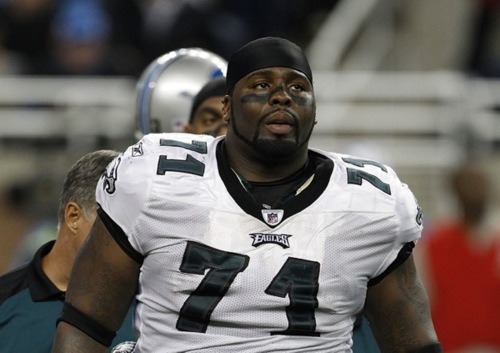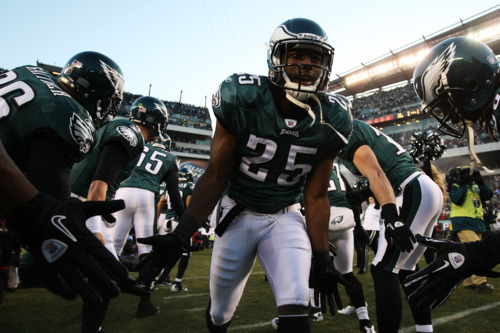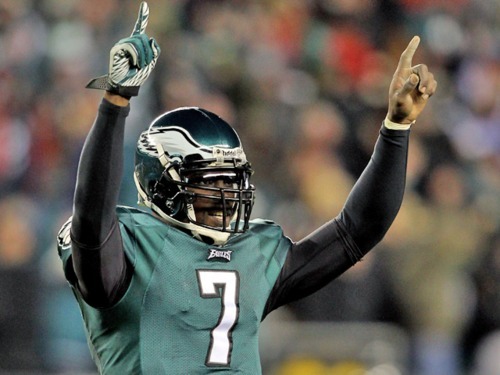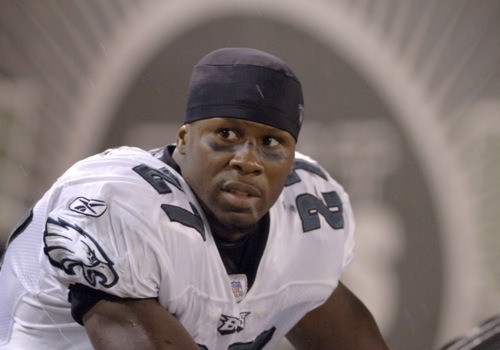
This is the fifth in a series of posts breaking down the Eagles position by position in advance of the upcoming draft and (hopefully) free agency. We’ve already looked at quarterback, running back, wide receiver, and tight end. Today we’ll examine the offensive line.
2010 Recap: By most metrics, the Eagles offensive line had a bad year in 2010. They gave up 50 sacks, tied for second-worst in the NFL, and were ranked 28th in Football Outsiders’ adjusted sack rate. Not only were there a lot of sacks, but the line was so porous that defenses knocked not one, but two different quarterbacks out of the starting lineup.
Most of the problems started on the right side of the line. Center Jamaal Jackson played only 20 snaps in week one before suffering a torn triceps that ended his season. He was replaced by Mike McGlynn, who was serviceable at best. To McGlynn’s right the guard spot was a revolving door of Nick Cole, Reggie Wells, and Max Jean-Gilles. Jean-Gilles had the job at the end of the season, but primarily by process of elimination. Hurt by the uncertainty next to him and apparently a bone chip in his knee, Winston Justice was also sub par at right tackle.
Jason Peters and Todd Herremans held steady on the left side of the line, and were the only two Eagles lineman that Pro Football Focus awarded positive grades. In run blocking especially they provided a ray of sunshine: backs averaged over 4.5 yards per carry going to the left, compared to a dismal 3.7 yards headed right.
Who’s Leaving: It’s possible that none of the 2010 right guards will be back. Wells is an unrestricted free agent. The Eagles didn’t bother putting a restricted free agent tender on the 6 ft., 350 lb. bowling ball that is Nick Cole. They did offer Jean-Gilles a 4th round tender, which might be enough to keep him if the same rules apply in the new collective bargaining agreement.
2011 Depth Chart: The left side of the line is set, and the team hopes that Jackson can return to solidify the center spot. If the season started tomorrow McGlynn would probably start at right guard, although he should be challenged by Jean-Gilles and a rookie. After last year’s letdown, Justice won’t be handed his starting spot either. He’ll likely have to compete with King Dunlap and/or a rookie.
Other players already on the roster competing for back up positions will be tackles Austin Howard and Fenuki Tupou, center A.Q. Shipley and center/guard Dallas Reynolds.
Potential Additions: This draft has a lot of offensive linemen for the Eagles to throw into the mix, and I’ve gone on record suggesting that it’s the most likely position the team will address in the 1st round. Wisconsin tackle Gabe Carimi has been mentioned a lot in mock drafts. Florida center/guard Mike Pouncey is another option. A few days ago, Tommy Lawlor identified Georgia guard Clint Boling as potential addition in the second round. It’s tough to speculate across such a huge range of players, but adding talent that can compete immediately is essential to restoring the line in 2011.
Future Outlook: Peters, Herremans, Jackson, and Justice are all signed through 2013, but new line coach Howard Mudd will have this season to determine if the last two are capable long term solutions. McGlynn, Dunlap, and Howard have all shown flashes of potential as well, but it’s unclear at this time where or if they fit into Mudd’s plans for — especially if the team devotes more high draft picks to the position.
Originally published at NBC Philadelphia. Photo from Getty.






